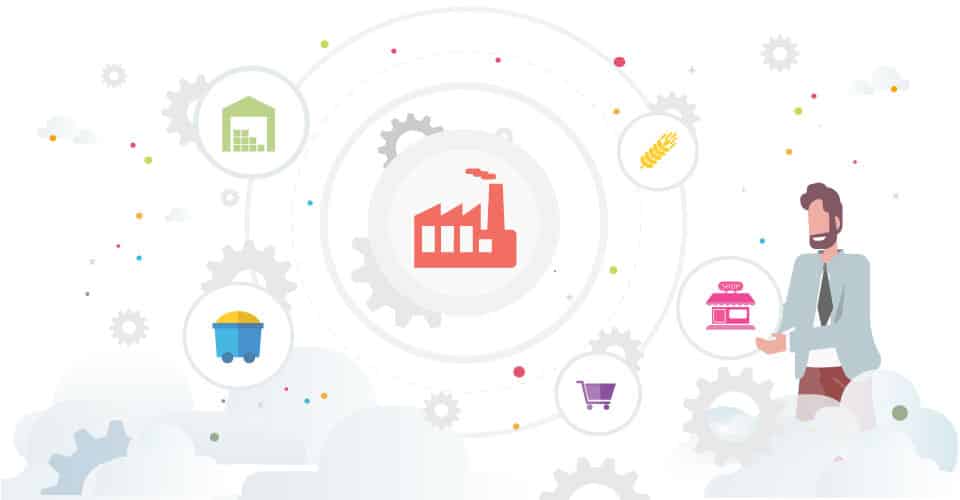For most Italian organizations, it is still a long way towards the aware use of data for producing business value. According to the most recent study presented by Osservatori.net del Politecnico di Milano, 55% of them are “immature” in data management. However, the Italian data market (software, services, and resources) is expanding and is worth over 2 billion. It made a significant rebound in 2021 (+13%), recovering after the most difficult period of the pandemic (+4% in 2020). The highest growth rate in the period was for Data Governance platforms (+48%).
In this article, we give an in-depth overview of the ways of producing value from data in manufacturing.
Proactive companies? Just about a fifth
In “immature” organizations, the business approach to data management is limited to “compliance with the technical and regulatory norms”. The Polimi study identified a mere 18% of “proactive” businesses, i.e., companies with dedicated professionals or internal structures specialized in data management and governance. A more mature and profound integration between Data Science and Data Governance supervised at the highest organizational levels (executive manager or even chief) happens only in 3% of cases.
Manufacturing is late, waiting for the RRP
The manufacturing sector is the most represented in the Politecnico study, counting 34% of the 135 businesses involved (also based on the Ateco codes in the industry and “over 249 employees”). Their expenditure share has grown more than the market average and is second only to banks. However, if we consider the situation beyond the quantitative figures, the Observatory warns that “this sector is late in terms of a strategic approach to the subject”.
This situation does not allow you to make timely decisions by transforming data into information useful for business. Until 2026, 40.3 billion allocated by the RRP (Recovery and Resilience Plan) for digitalization and innovation will be available. Why not take advantage of these resources?
EU: manufacturing data worth 1,500 billion
The European Commission has estimated that the potential value of non-personal data in manufacturing will be worth 1.500 billion by 2027. It has created a common European data space to make it possible to use this enormous industrial asset and support the competition and performance. These measures must be complemented by policies “that stimulate the use of data and the demand for data-enriched services“.
The advantages of data management throughout the entire supply chain
There are at least six ways to create business value through business data management in manufacturing:
- Reduce manual interventions to make daily operations more efficient
- Control the risks caused by incorrect input data
- Integrate the processes into the supply chain
- Identify the data and the opportunities that are crucial for business
- Provide certified and reliable data for sustainable development
- Centralize the data coming from the branches (i.e., by quickly calculating the KPIs on the data gathered and aggregated by different management systems in use) for a unified vision of the data. It would allow making more accurate and aware decisions.
Up to 50% better production output, from pharma to food
Various studies underline how Data Management initiatives in manufacturing helped numerous businesses collect, clean up, and analyze the data coming from the machines and how it led to strong improvements in the production output:
a) a major European chemical manufacturer used sensor data to analyze inputs and outputs, temperatures, quantities, carbon dioxide flows and pressures. Thus, a huge influence of CO2 on the yield was discovered, making it possible to save 20% of raw materials and 15% of energy costs;
b) thanks to correct sensor data management, a large pharmaceutical company discovered the interdependencies between the 9 most important parameters for vaccine production, improving the yield by 50%;
c) a sugar company that had production issues (moisture and unsatisfactory raw materials) with serious consequences for the product taste studied the sensor data to create a unified standard, reduce costs, and increase customer satisfaction in addition to facilitating the workloads.
Equally important for the sector is the data-driven predictive analysis. For example, it gives the advantage in maintenance planning, avoiding unexpected downtime and disruptions to production lines. According to a Honeywell-KRC study, it is possible to “reduce disruptions by up to 26% and cut unplanned downtime by almost a quarter”.
An efficient and reliable data pipeline
In brief, focusing on the data pipeline management makes it possible to reconcile, aggregate, analyze data, reduce risks, and establish the approach that it is not the processes, often locked in silos, that need change but the entire strategic vision of the company. These are the main needs of the companies that want to modernize their processes and make the business more efficient, creating value from the data already available and capitalizing on investments already made.
The benefits of proactive business data management impact the entire company and its production chain, from raw material supply to production, processing, and packaging, including the storage, the wholesale and large-scale organized distribution, up to retail redistribution.
Create value with the Irion EDM® platform
In the recent past, the investments were driven by tax incentives such as “super amortization” for purchasing machinery. Now companies can use their data assets to make communicate all the data sources they produce at exponential rates and orchestrate the data streams for more efficient production and strategically driven decisions.
Irion EDM®, the only 100% Made in Italy platform for Enterprise Data Management, makes it all possible. Data management becomes homogeneous and consistent: from sales to logistics, from finance to purchases, from production to storage. The numerous sources include orders, customers, and products; costs, revenues and assets, data on semi-finished products; BOM and MRP; finished products; routes and transport information, delivery notes… This is not even the complete list of all the possible sources from which the data is collected, managed, normalized, in other words, governed.






